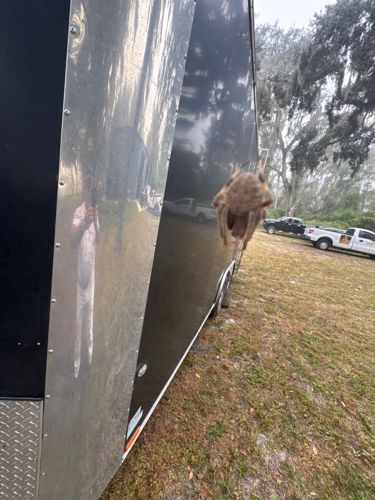Florida huntsman spider, Giant crab spider
Scientific Name: Heteropoda venatoria
Order & Family: Araneae, Sparassidae
Size: Body length 0.7 to 1.0 inch (1.8 to 2.5 cm); leg span up to 5 inches (12.7 cm) or more.

Natural Habitat
Tropical and subtropical regions worldwide; often found in and around human dwellings, under bark, rocks, and leaf litter. They are known to enter homes and other structures.
Diet & Feeding
Primarily feed on insects such as cockroaches, crickets, and other large arthropods. They are active hunters, ambushing prey rather than building webs for capture.
Behavior Patterns
Nocturnal and solitary. They are very fast runners and can move sideways like a crab, which gives them one of their common names. They do not build typical capture webs but may spin silk for egg sacs or shelters. Females guard their egg sacs until the spiderlings hatch.
Risks & Benefits
Potential risks include a bite that, while not typically life-threatening to humans, can be painful and cause localized swelling, redness, and mild nausea. However, these spiders are generally not aggressive and prefer to flee. Benefits include serving as natural pest control by preying on common household insects.
Identified on: 11/17/2025